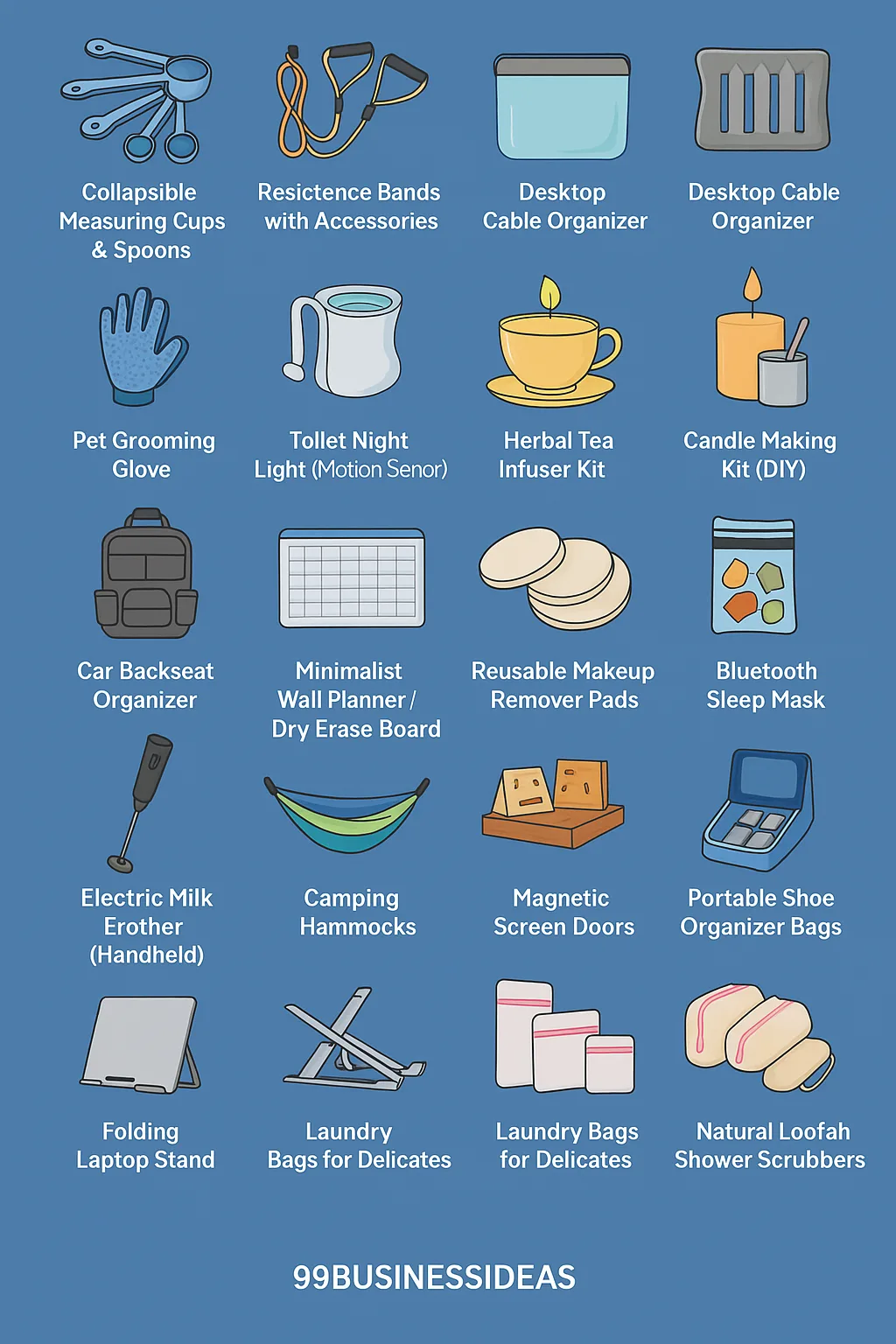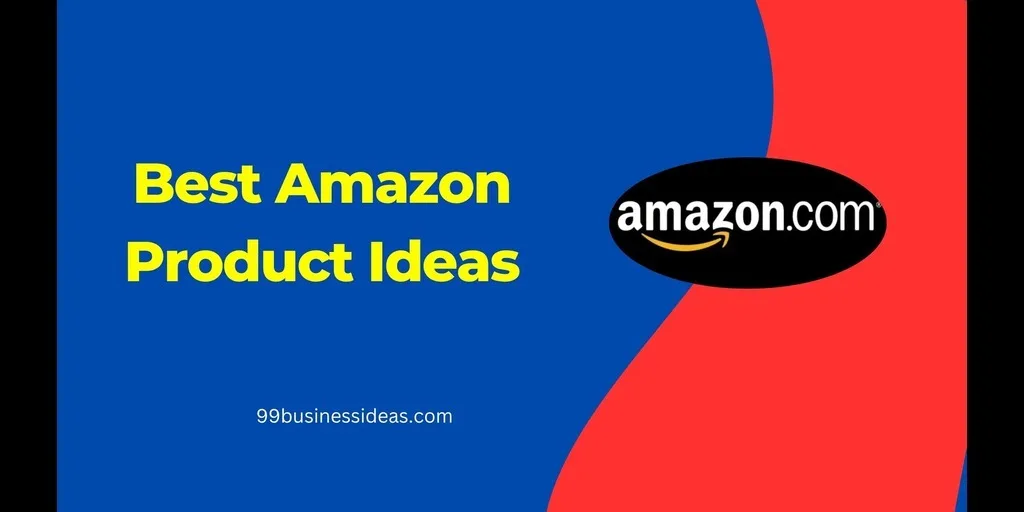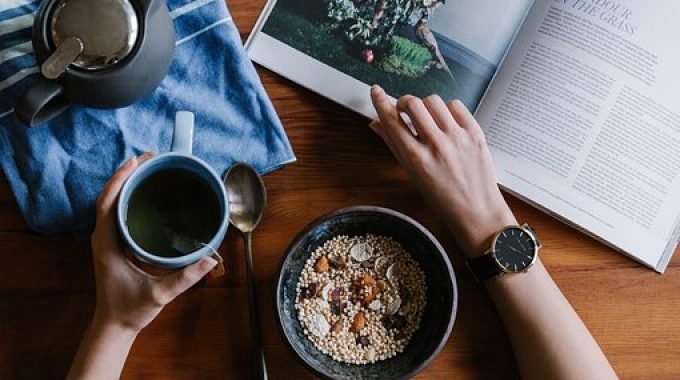Starting a private label business on Amazon using the FBA model is one of the most profitable ways to build an eCommerce brand in 2025. With millions of active buyers on Amazon, even small sellers can grow quickly by identifying the right niche products and branding them under their labels.
In this guide, you’ll find the best Amazon product ideas for private label FBA, along with actionable tips on how to choose the right product, source it, validate demand, and stand out in a competitive marketplace.
📦 What is Amazon FBA Private Label?
FBA stands for Fulfillment by Amazon, where Amazon stores, packs, and ships your products to customers on your behalf. You simply send your products to their warehouse and focus on sales and branding.
Private labeling means selling products made by a manufacturer under your own brand name. Instead of reselling other brands, you create your own identity with unique packaging, branding, and marketing.
Benefits include:
- Full control over your branding
- Higher profit margins
- More scalable business model
- Long-term asset creation
Read: How To Start A Dropshipping Business from Home
✅ How to Choose the Right Amazon Product for Private Labeling
Before diving into product ideas, you need to understand what makes a good private-label product.
🔍 Key selection criteria:
- High demand, low competition
- Small and lightweight (under 2 lbs)
- Non-seasonal with year-round demand
- Not dominated by big brands
- Price range of $15 to $50 for healthy profit margins
- Customizable for branding and differentiation
Best Amazon Product Ideas for FBA Private Label (2025)

These product ideas are selected based on long-term profitability, branding flexibility, and ease of sourcing, perfect for aspiring private label entrepreneurs in 2025.
1. Silicone Reusable Food Storage Bags
These eco-friendly alternatives to plastic zip-lock bags are ideal for food storage, meal prepping, and travel. They’re popular among health-conscious and sustainability-focused consumers.
- Market Demand: High; growing interest in sustainable products globally
- Profit Margin: 30–40%
- Customization Potential: High (colors, sizes, logo branding, packaging)
- Supplier Availability: Widely available on Alibaba, IndiaMart, and Vietnam-based exporters
- Price Range: $18–$30 retail
2. Resistance Bands with Accessories
Fitness resistance bands remain a staple for home workouts. Bundling bands with accessories like door anchors, handles, and a carry pouch adds value.
- Market Demand: Strong; driven by home fitness and wellness trends
- Profit Margin: 35–50%
- Customization Potential: Moderate to high (band strength, colors, branding on pouch or guide)
- Supplier Availability: High, with hundreds of verified suppliers
- Price Range: $20–$40 retail
3. Baby Silicone Feeding Set
Includes a baby plate, bowl, spoon, cup, and bib made of BPA-free silicone. Ideal for modern parents looking for safe and easy-to-clean baby items.
- Market Demand: Evergreen; consistent new-parent demand
- Profit Margin: 30–45%
- Customization Potential: High (colors, brand logo, packaging design)
- Supplier Availability: Easily sourced from Asia and Indian manufacturers
- Price Range: $25–$35 retail
4. Desktop Cable Organizer
A must-have for professionals working from home, these simple tools reduce wire clutter on desks and entertainment units.
- Market Demand: Growing with hybrid work setups
- Profit Margin: 40–60%
- Customization Potential: High (material, shape, logo, color)
- Supplier Availability: Very high; low MOQ from global suppliers
- Price Range: $10–$20 retail
5. Collapsible Measuring Cups & Spoons
Popular kitchen gadgets for small kitchens and RV users. They’re made of food-grade silicone and save space.
- Market Demand: High, especially in urban households
- Profit Margin: 35–45%
- Customization Potential: Moderate (colors, branded sets, packaging)
- Supplier Availability: Excellent availability in China and India
- Price Range: $12–$25 retail
6. Pet Grooming Glove
This glove removes loose fur and massages pets during grooming. Loved by dog and cat owners alike.
- Market Demand: Strong and consistent in the pet supplies category
- Profit Margin: 30–50%
- Customization Potential: High (material, glove shape, packaging design)
- Supplier Availability: Abundant on Alibaba and US-based wholesalers
- Price Range: $15–$25 retail
7. Toilet Night Light (Motion Sensor)
A novelty yet useful item for families with kids or elderly members. Lights up the toilet bowl with soft LED when motion is detected.
- Market Demand: Steady, with spikes during holiday gift seasons
- Profit Margin: 40–60%
- Customization Potential: Moderate (LED color, packaging, logo on casing)
- Supplier Availability: Easily available in bulk with custom branding options
- Price Range: $12–$22 retail
8. Herbal Tea Infuser Kit
Reusable infuser sets with mesh or silicone balls, paired with loose-leaf tea. Great for health-conscious buyers and gift shoppers.
- Market Demand: Rising interest in wellness and healthy beverages
- Profit Margin: 35–50%
- Customization Potential: High (infuser design, packaging, blend types)
- Supplier Availability: Good, especially in India, China, and Sri Lanka
- Price Range: $20–$35 retail
9. Candle Making Kit (DIY)
A beginner-friendly kit that includes soy wax, wicks, jars, fragrance oils, and instructions. Popular among craft enthusiasts and as gifts.
- Market Demand: High around holidays and among DIY hobbyists
- Profit Margin: 30–45%
- Customization Potential: Very high (scent, wax type, packaging design)
- Supplier Availability: Strong, especially in India and Southeast Asia
- Price Range: $25–$50 retail
10. Bluetooth Sleep Mask
Combines a sleep mask with Bluetooth-enabled speakers to help users fall asleep with music or meditation. Ideal for travel and wellness niches.
- Market Demand: Growing in wellness and travel categories
- Profit Margin: 35–55%
- Customization Potential: Moderate (fabric, size, brand logo)
- Supplier Availability: Strong in China; rising interest from Indian OEMs
- Price Range: $25–$45 retail
11. Car Trunk Organizer
Car trunk organizers help drivers keep groceries, tools, and travel gear in order. These foldable units offer a practical solution and are ideal for families, road trippers, and Uber drivers.
- Market Demand: Strong among urban vehicle owners
- Profit Margin: 30–50%
- Customization Potential: High (size, color, compartments, logo)
- Supplier Availability: Excellent in China and India
- Price Range: $25–$45 retail
12. Minimalist Wall Planners / Dry-Erase Boards
Perfect for students, professionals, and home offices. These planners help with task management and organization. Include monthly or weekly layouts for more value.
- Market Demand: Stable throughout the year, spikes during back-to-school seasons
- Profit Margin: 35–55%
- Customization Potential: Very high (design, layout, branding)
- Supplier Availability: Available through paper goods and office supply manufacturers
- Price Range: $20–$40 retail
13. Reusable Makeup Remover Pads
Eco-friendly alternative to disposable cotton pads. These soft, washable pads are ideal for skincare lovers and zero-waste advocates.
- Market Demand: Rising; sustainability-focused beauty buyers
- Profit Margin: 40–60%
- Customization Potential: High (packaging, branding, pad color/texture)
- Supplier Availability: Strong globally
- Price Range: $12–$25 retail
14. Bamboo Bathtub Caddy Tray
Luxury meets relaxation. These trays hold phones, books, candles, and wine glasses — a premium feel product great for gifting.
- Market Demand: Excellent in home decor and wellness markets
- Profit Margin: 30–45%
- Customization Potential: Moderate to high (engraved logo, adjustable size)
- Supplier Availability: High, especially in India, Vietnam, and China
- Price Range: $35–$60 retail
15. Felt Letter Boards
Trendy boards are used for social media content, cafes, or home decor. Comes with changeable letters and emojis.
- Market Demand: Moderate but highly engaged niche (photographers, influencers, teachers)
- Profit Margin: 35–55%
- Customization Potential: High (felt color, frame, font style, packaging)
- Supplier Availability: Widely available
- Price Range: $20–$35 retail
16. Electric Milk Frother (Handheld)
Coffee lovers and baristas use frothers to whip up lattes at home. It’s a compact electronic gadget with great gifting potential.
- Market Demand: Consistently high in home/kitchen and coffee niche
- Profit Margin: 30–50%
- Customization Potential: Moderate (logo on handle, packaging, accessories like stand or scoop)
- Supplier Availability: Strong in electronics and kitchenware suppliers
- Price Range: $20–$30 retail
17. Camping Hammocks
Compact, portable hammocks appeal to campers, hikers, and backyard loungers. They’re lightweight, durable, and great for summer seasons.
- Market Demand: High in spring/summer in the U.S. and EU
- Profit Margin: 35–45%
- Customization Potential: High (color, logo, size, pouch design)
- Supplier Availability: Abundant on Alibaba, IndiaMart, and Vietnamese exporters
- Price Range: $25–$50 retail
18. Magnetic Screen Doors
Mesh screen doors that snap shut using magnets—popular among pet owners and families in warmer climates.
- Market Demand: Seasonal but high in summer; popular in the U.S.
- Profit Margin: 30–40%
- Customization Potential: Medium (size, packaging, branding)
- Supplier Availability: Good, especially in China
- Price Range: $20–$40 retail
19. Wooden Montessori Toys
Educational wooden toys for toddlers are trending due to their eco-friendliness and developmental benefits.
- Market Demand: High among conscious parents and gift shoppers
- Profit Margin: 30–45%
- Customization Potential: High (design, shape, packaging, logo)
- Supplier Availability: Sourced from India, Eastern Europe, and China
- Price Range: $20–$45 retail
20. Digital Kitchen Scale
A staple in modern kitchens for health-conscious consumers. These digital scales help in meal prep and portion control.
- Market Demand: High, especially among diet and fitness users
- Profit Margin: 25–40%
- Customization Potential: Moderate (color, display style, packaging)
- Supplier Availability: Easily sourced from electronics manufacturers
- Price Range: $15–$30 retail
21. Portable Shoe Organizer Bags
Travelers and frequent gym-goers love keeping their shoes separate from their clothes. These zippered fabric bags are lightweight, foldable, and perfect for private label.
- Market Demand: Moderate to high, especially in travel and fitness niches
- Profit Margin: 35–50%
- Customization Potential: High (colors, fabric type, logo embroidery)
- Supplier Availability: Abundant in India and China
- Price Range: $12–$25 retail
22. Silicone Baking Mats
Reusable silicone baking mats are ideal for home bakers looking for an alternative to parchment paper. They’re heat-resistant, easy to clean, and eco-friendly.
- Market Demand: High among home chefs and baking hobbyists
- Profit Margin: 30–45%
- Customization Potential: High (custom sizing, colors, logo printing)
- Supplier Availability: Widely available across Asia
- Price Range: $15–$30 retail
23. Folding Laptop Stand
With remote work still booming, ergonomic accessories like portable laptop stands are in high demand. These are foldable, compact, and perfect for students and professionals.
- Market Demand: Strong; steady year-round
- Profit Margin: 30–50%
- Customization Potential: Moderate (color, material, logo, laser engraving)
- Supplier Availability: High in China and Taiwan
- Price Range: $25–$45 retail
24. Laundry Bags for Delicates
Mesh laundry bags protect delicate clothes during machine washing. They’re lightweight, cheap to produce, and sell well in multi-packs.
- Market Demand: Consistent and evergreen in the home care niche
- Profit Margin: 40–60%
- Customization Potential: High (sizes, zipper colors, branded labels)
- Supplier Availability: Very high in Asia
- Price Range: $10–$20 retail (for a pack of 3–5)
25. Natural Loofah Shower Scrubbers
Eco-conscious skincare users prefer loofah scrubbers over synthetic sponges. These are biodegradable, affordable, and often purchased in bundles.
- Market Demand: Rising in natural skincare and zero-waste spaces
- Profit Margin: 40–60%
- Customization Potential: High (size, shape, packaging, logo tags)
- Supplier Availability: Easily sourced from India, Egypt, and Southeast Asia
- Price Range: $12–$25 retail
📊 Product Trends to Watch in 2025
Understanding market trends is crucial before selecting a private-label product. The e-commerce space is evolving, and staying ahead of consumer preferences can help you find products with long-term demand and less competition. Here are the key trends to watch in 2025:
🟢 Sustainable & Eco-Friendly Products
Consumers are increasingly choosing brands that align with environmental values. Products made from bamboo, silicone, recycled plastic, or biodegradable materials are gaining popularity. Think reusable kitchenware, eco-packaging, or zero-waste personal care items.
Examples:
- Reusable silicone food bags
- Natural loofah scrubbers
- Bamboo toothbrush holders
🤖 Smart & Functional Gadgets
Low-tech smart accessories—like motion-sensor lights, portable fans, or Bluetooth-integrated items—are on the rise. These are cost-effective, provide real value, and are easy to private label.
Examples:
- Toilet night lights
- Bluetooth sleep masks
- Smart kitchen timers
💪 Health, Fitness & Wellness
Health-conscious living continues to drive demand. Home fitness tools, posture correctors, massage devices, and nutrition-related items are all seeing steady sales.
Examples:
- Resistance bands
- Massage balls
- Digital food scales
🧘 Mindfulness & Self-Care
Products that support mental wellness, relaxation, and routines are booming. Think yoga accessories, sleep aids, aromatherapy kits, and journals.
Examples:
- DIY candle kits
- Herbal tea infusers
- Sleep masks with sound features
🧩 DIY, Hobby & Creative Kits
From candle making to wall art, people are spending more on creative hobbies, especially those they can do from home. These products have high perceived value and are perfect for bundling.
Examples:
- Craft kits
- Baking kits
- Puzzle boards or art journals
📱 Remote Work Essentials
The hybrid work trend is here to stay. People are upgrading their home office setups with accessories that enhance comfort, productivity, and organization.
Examples:
- Laptop stands
- Cable organizers
- Dry erase boards
By aligning your private label product with one or more of these trends, you’ll be positioned to capture emerging customer interest and stand out in competitive niches.
Read: Best Dropshipping Business Ideas
🏭 Where to Source Private Label Products
Once you’ve shortlisted a profitable product idea, the next step is finding a reliable supplier to manufacture your product under your own brand name. The success of your private label business largely depends on product quality, pricing, delivery timelines, and supplier communication. Here’s where and how to source your private-label products in 2025:
🌐 1. Alibaba.com
Best For: Global sourcing (especially from China)
Alibaba is the most popular platform for finding manufacturers and wholesalers at competitive prices. It offers a wide variety of private label-ready products with options for customization, MOQ (minimum order quantity), and secure payment systems like Trade Assurance.
- Pros: Thousands of suppliers, detailed listings, global reach
- Cons: Communication barriers, need to vet suppliers carefully
📝 Tip: Always request a sample before placing bulk orders.
🇮🇳 2. IndiaMART
Best For: Indian entrepreneurs or buyers looking to source locally
IndiaMART is ideal if you’re based in India or want to support “Make in India” products. Many manufacturers offer private labeling, low MOQs, and the advantage of reduced shipping time and costs within the country.
- Pros: Local manufacturing, lower shipping time, better communication
- Cons: Fewer options compared to Alibaba, less automated process
🌎 3. GlobalSources.com
Best For: Electronics and trending niche products
This B2B sourcing platform connects you to verified manufacturers in Asia, including Taiwan, Korea, and Vietnam. It’s widely used for electronics, accessories, and innovation-driven products.
- Pros: Verified suppliers, high-quality manufacturing
- Cons: Higher MOQs, slightly less variety than Alibaba
📦 4. Domestic Wholesale Markets
Best For: Faster turnaround and quality checks
If you want to minimize import duties or personally inspect products, consider sourcing from local trade shows, exhibitions, or industrial hubs. In India, cities like Delhi, Mumbai, Moradabad, and Tirupur are known for manufacturing home goods, textiles, and lifestyle products.
- Pros: Direct supplier relationship, no import issues
- Cons: Limited scalability, fewer tech-enabled systems
🎯 5. Private Label Suppliers & Direct Manufacturers
Platforms like:
- ThomasNet (USA) – for verified North American manufacturers
- Maker’s Row (USA) – focused on small-batch, premium goods
- TradeIndia – for Indian B2B suppliers offering white-label goods
These platforms connect you with suppliers who specialize in private label production, offering flexibility in branding, design, and compliance.
✅ Sourcing Tips:
- Ask about MOQs (minimum order quantities) before negotiations
- Check for certifications (BPA-free, CE, ISO, etc.)
- Use escrow or secure payment gateways
- Vet suppliers via video calls or third-party inspections
- Always order samples first to test the quality
By choosing the right sourcing partner, you ensure that your private label brand is built on a strong foundation of quality, reliability, and cost-efficiency.
✅ How to Validate Your Product Idea
Before investing time and money into sourcing and branding a private-label product, it’s essential to validate whether the idea has real market demand and profitability. Product validation helps reduce risk and ensures you’re not launching a product that no one wants.
Here’s a step-by-step process to validate your Amazon FBA private label product idea:
🔍 1. Check Amazon Search Volume
Use keyword research tools like Helium 10 or Jungle Scout to check how many people are searching for your product idea each month.
- Look for primary keywords with at least 3,000–10,000+ searches/month
- Check related long-tail keywords and search trends
- Use Amazon’s auto-suggest feature for keyword inspiration
Example: Typing “silicone baby feeding” in Amazon shows trending suggestions like “silicone baby feeding set” or “bowl with suction,” indicating active buyer interest.
📈 2. Analyze Amazon Best Seller Rank (BSR)
The BSR shows how well a product is selling in its category. Lower BSR = more sales.
- Ideal range: BSR under 20,000 in the main category
- Analyze the top 5 competitors for BSR consistency
- Check if demand is steady or seasonal
Use Keepa or CamelCamelCamel to track BSR history over time.
🔄 3. Study Customer Reviews & Feedback
Read reviews of similar products to understand what customers love—and hate.
- Identify common complaints to improve on
- Look for missing features or design flaws
- Use this data to differentiate your version
Tip: Reviews help you build a better product with added features, improved packaging, or better instructions.
📊 4. Estimate Profit Margins
Use an FBA calculator or tools like SellerApp or Jungle Scout’s Profitability Calculator to determine your estimated profit.
Account for:
- Product cost
- Shipping
- Amazon FBA fees
- PPC/advertising
- Aim for at least a 30% profit margin
If the margin is too thin, it may not be worth launching.
🔎 5. Check Google Trends
Search your product keyword on Google Trends to understand global and regional interest over time.
- Look for consistent or rising interest
- Avoid products with short-term spikes or declining popularity
- Compare seasonal vs. evergreen trends
💬 6. Run a Survey or Use Polling Tools
Before committing, ask potential buyers for feedback.
- Use PickFu, Reddit, or Facebook groups to test packaging or product concepts
- Ask: “Would you buy this?” or “What would you change?”
- Validate visual appeal and unique features
🎯 7. Spy on Competitors
- How many reviews do top sellers have?
- Are the listings optimized with A+ content and images?
- Do they all look the same, or is there room to stand out?
- Less saturated = more opportunity to launch a unique product with fewer marketing costs.
📝 Summary: Your Product Validation Checklist
✅ Strong keyword search volume
✅ Low to medium competition
✅ BSR under 20,000 in the main category
✅ Room to improve based on customer reviews
✅ Estimated profit margin of 30% or more
✅ Google Trends shows stable or rising demand
✅ Positive buyer feedback or polling response
Validating your private label product idea helps you avoid costly mistakes and gives you the confidence to move forward with sourcing and branding.
💰 Cost Breakdown & Profit Margin for Amazon FBA Private Label
Before launching a private label product on Amazon, it’s critical to understand your cost structure and ensure there’s enough room for profit. Your profit margin will determine whether your business is scalable and sustainable over time.
Below is a breakdown of the typical costs involved in an FBA private label business in 2025:
A. Cost of Goods (COG)
This is the price you pay the manufacturer per unit. It includes product manufacturing, custom branding (like logo printing), and basic packaging.
Example: A silicone baby bowl set may cost $4–$6 per unit, depending on customization and order volume.
B. Shipping Fees
Includes freight charges (by air or sea), import duties, and logistics from the supplier’s location to Amazon’s warehouse.
Shipping can be arranged via:
- FOB (Freight on Board)
- DDP (Delivered Duty Paid)
- Third-party logistics (3PL) in your local market
Example: For lightweight items, shipping may cost $1–$3 per unit (bulk rates).
C. Amazon FBA Fees
Amazon charges fees for storing, picking, packing, and shipping your product. These are calculated based on product size and weight.
Types of FBA fees include:
- Fulfillment fee
- Storage fee (monthly or long-term)
- Referral fee (usually 15% of selling price)
Example: For a $25 item, expect $5–$7 in FBA and referral fees combined.
📝 Tip: Use Amazon’s free FBA calculator to estimate your exact costs based on ASIN or category.
D. Advertising (PPC & Marketing)
To get visibility and drive early sales, you’ll need to run Amazon Sponsored Product ads (PPC).
- Initial campaigns often cost $1–$3 per unit sold
- Some sellers allocate 10–20% of their selling price to advertising
- Ongoing PPC is essential, especially in competitive niches
E. Total Example Cost Calculation
| Expense Category | Estimated Cost per Unit |
|---|---|
| Cost of Goods | $5.00 |
| Shipping (by sea/air) | $2.00 |
| Amazon FBA + Referral | $6.00 |
| Advertising (PPC) | $2.00 |
| Total Cost | $15.00 |
| Selling Price | $25.00 |
| Net Profit | $10.00 per unit |
| Profit Margin | 40% |
✅ Suggested Profit Margin
Aim for a minimum 30% net profit margin after all expenses. This gives you enough buffer to reinvest in inventory, marketing, and business growth.
Higher margins are achievable with:
- Bundled products (increasing perceived value)
- Better supplier negotiation
- Brand loyalty and repeat customers
By carefully calculating your costs and keeping track of your margins, you’ll ensure your Amazon private label business is built for long-term profitability.
🛍️ Amazon Listing Optimization Tips
Your product listing is the first impression customers get on Amazon—make it count. A well-optimized listing not only improves your visibility in search results but also boosts conversions. Here’s how to optimize your Amazon private label product listings in 2025:
🔑 1. SEO-Friendly Titles and Bullet Points
- Use high-volume, relevant keywords in your product title and bullet points. Focus on benefits, not just features.
- Title format: [Brand] + [Primary Keyword] + [Main Feature] + [Size/Color]
- Bullet points: Highlight pain points, benefits, materials, and use cases.
📸 2. High-Quality Product Images
Include at least 6–7 professional images showing the product from different angles, in use, and with lifestyle backgrounds.
- Add infographics to highlight key features
- Use white backgrounds and 3D renders for a premium look
- Zoomable images increase trust
💬 3. A+ Content (for Brand Registered Sellers)
If you’re brand is registered with Amazon, you can access A+ Content to enhance your product page with rich media.
- Add comparison charts, banners, lifestyle visuals, and brand story
- A+ Content can improve conversion rates by up to 10%
📝 4. Compelling Descriptions and Reviews
Write a benefit-driven product description with formatting (bold, bullets) using HTML tags. Encourage reviews through follow-up emails or Amazon’s “Request a Review” tool.
⚠️ Common Mistakes to Avoid
Avoiding these costly mistakes can save you thousands of dollars and months of frustration:
❌ 1. Launching Trendy Products with a Short Shelf Life
Fidget spinners and fad gadgets might sell fast—but they fizzle out quickly. Focus on evergreen products with long-term demand.
❌ 2. Poor Supplier Communication
Misunderstandings can lead to production delays or quality issues. Always use written contracts and clarify product specs clearly before production.
❌ 3. Ignoring Amazon’s Product Guidelines
Selling restricted or incorrectly labeled products can result in listing suspensions. Always check Amazon’s product compliance and category guidelines.
❌ 4. Not Budgeting for Marketing
Many sellers underestimate the cost of Amazon PPC, influencer outreach, or product giveaways. Include a realistic marketing budget in your launch plan.
🧰 Tools to Help You Succeed
Streamline your product research, optimization, and management with these tools:
🔎 Product & Keyword Research
- Jungle Scout – Product trends, sales estimates, niche score
- Helium 10 – Keyword tracking, profitability calculator
- Ubersuggest – SEO keyword suggestions and traffic analysis
- Amazon Auto-Suggest – Great for long-tail keyword ideas
🛒 Listing Optimization
- Canva – Design infographics, lifestyle images, product inserts
- Copy.ai – Generate product descriptions using AI
- PickFu – Split test titles, thumbnails, or product packaging
📦 Inventory & Profit Tracking
- Sellerboard – Profit analytics, PPC tracking, alerts
- InventoryLab – Inventory management, labeling, listing creation
- Zoho Inventory – Ideal for scaling and syncing multiple channels
🌟 Success Stories: Real Private Label Sellers
🧴 Case Study 1: Sarah – Launched a Silicone Baby Feeding Set
Sarah, a mom of two, launched her brand of colorful silicone baby feeding sets in 2022. She used PickFu to test her product design and worked with a Vietnamese supplier for custom molds. Her unique packaging and eco-friendly branding helped her hit $30K/month within 9 months.
Key Success Factors:
- Differentiated design
- Strong product-market fit
- Effective influencer partnerships
🧘 Case Study 2: Raj – Built a Wellness Brand from India
Raj started selling herbal tea infusers and meditation aids from India in 2023. He focused on spiritual wellness, offered bundled products, and used Amazon A+ Content to share his brand story. His listings attracted over 500 reviews and built a loyal following.
Key Success Factors:
- Niche branding (Ayurveda & meditation)
- High-quality packaging
- Focus on long-term SEO and reviews
🛠️ Case Study 3: Maria – Dominated the Home Office Niche
Maria identified a growing demand for laptop stands and cable organizers during the remote work boom. She sourced sleek aluminum stands with her brand engraved and optimized her Amazon listings with stunning lifestyle photography.
Key Success Factors:
- Early trend identification
- Strong visual branding
- Optimized PPC campaigns
These stories show that success in Amazon’s private label comes from research, creativity, and execution, not luck.
✅ Conclusion – Amazon Product Ideas
Starting a successful Amazon FBA private label business in 2025 begins with one critical step: choosing the right product. With e-commerce continuing to grow and consumer preferences shifting toward sustainability, personalization, and convenience, there are more opportunities than ever to build a profitable brand.
In this guide, we’ve shared 25 proven product ideas, sourcing strategies, validation techniques, and profit margin calculations to help you get started the right way. Whether you’re launching your first private label or expanding your product line, the key is to focus on:
- Solving a real customer problem
- Differentiating your product from the competition
- Ensuring healthy profit margins through smart sourcing
- Validating your idea with data, not just assumptions
As Amazon continues to evolve, sellers who do their research, provide value, and build trusted brands will stand out and succeed.
🚀 Ready to Launch?
Take your next step by shortlisting 2 to 3 product ideas, researching suppliers, and validating demand using the tools we’ve listed. The sooner you take action, the faster you can launch your own profitable Amazon private label brand.

Rupak Chakrabarty is a small business coach and founder of 99BusinessIdeas.com, where he and his team share practical guides and startup resources for entrepreneurs worldwide. With over a decade of experience in business consulting, Rupak has advised startups and small businesses across industries, including retail, food services, making money online, and e-commerce. His mission is to simplify entrepreneurship by providing actionable insights that help everyday people turn ideas into profitable ventures.
Contact: rupak@99businessideas.com


